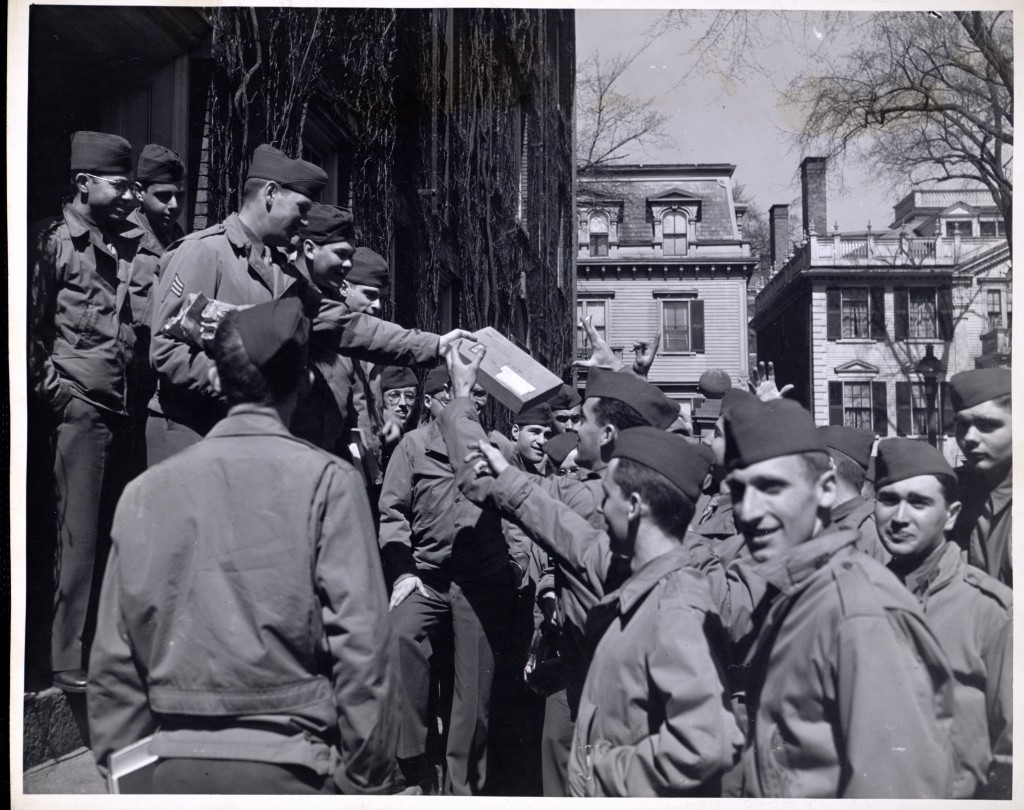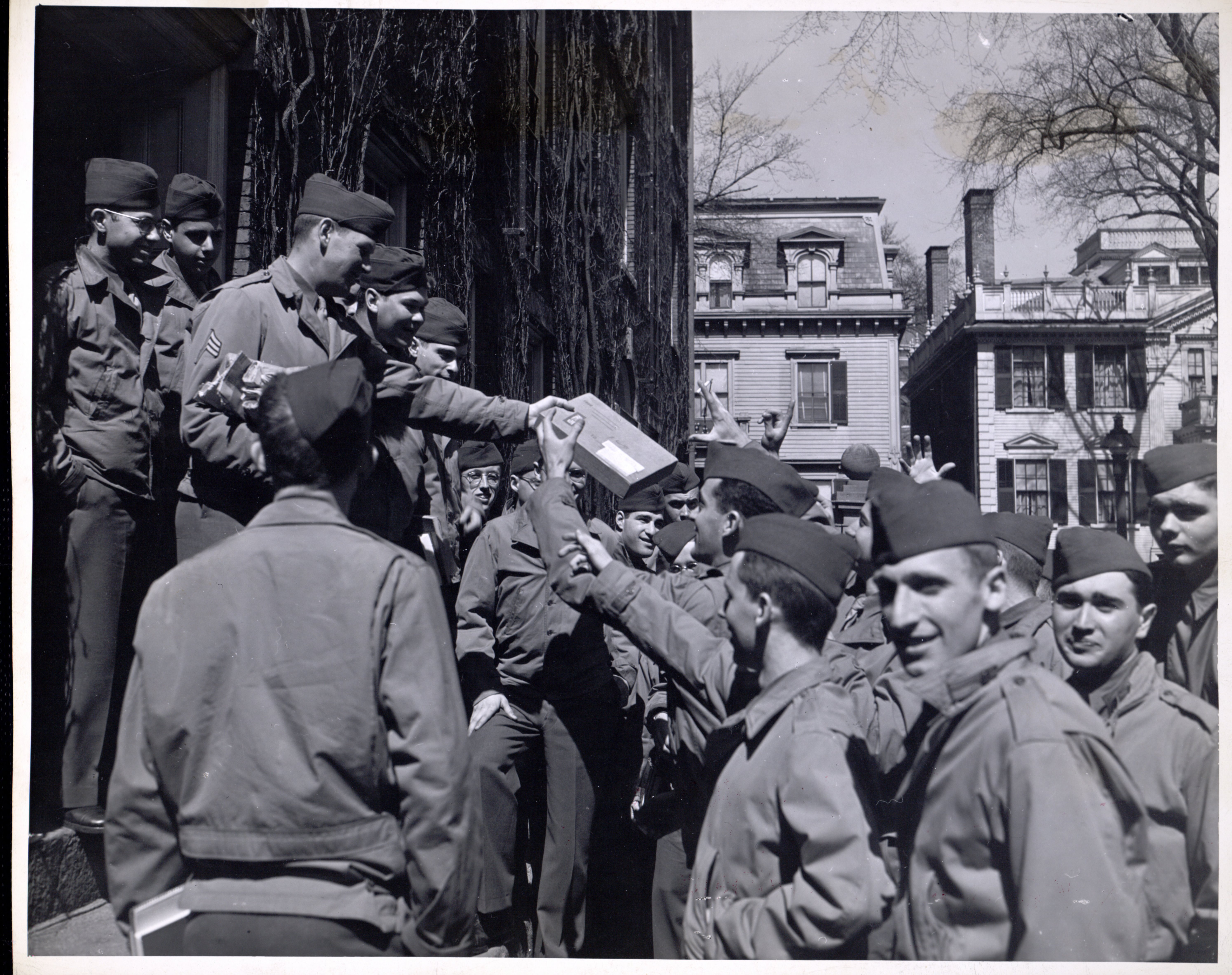By Alex Lloyd George
March 1933 had been a fairly quiet month for members of the Brown University community and its daily paper, the Brown Daily Herald (BDH). If one topic had held the student body in rapture, it was the impending legalization of beer, due to be signed into law by the newly elected President Franklin Delano Roosevelt. Even the new and increasingly aggressive German chancellor played second billing to soon-to-be legal libations. If the first three weeks of March hadn’t quite been blissful, then they certainly were unremarkable.
This early spring calm came to an abrupt halt on the morning of March 22, 1933, as an editorial headlined “War Against War” was featured in the morning’s BDH. The column began with a statistic — the number of young men killed in World War I — and ended with a supplication to all American college students to “unite in this movement of militant pacifism.” It employed emotive language to appeal to its audience, with discourse on the futility of war and the dangerous apathy of the “middle aged propagandists,” who would send these young men to an early grave.

For several days following this publication, Brown saw a sustained campaign by members of the BDH who wanted to cement their words with action. March 23 marked a height in the groundswell of support at the University, as influential campus figures, most notably then-President Clarence Barbour, voiced their approval of the students’ motives — if not quite the way they were manifested. The point of contention was a circulating petition with six planks, the most important of which were the condemnation of war as “futile and destructive” and the “united refusal of the youth of America to bear arms, except in case of invasion.” Addressed to Roosevelt and Congress, the petition was sent to 145 colleges around the nation in the hope that college pacifism would coalesce around the document. Alongside the petition, students formed a “War Against War” Committee to coordinate the gathering of signatures and appeals for support. The Committee was staffed by a number of student body luminaries and chaired by Harold Seidman, an incoming BDH managing editor.
The petition quickly became a lightning rod for a range of sentiments on the issue. The president of the Newport County Women’s Republican Club condemned the actions and opinions of the BDH editorial board as “un-American and a menace to our national defense.” A letter from The Newport Daily News also lamented that the “historic Rhode Island institution [of Brown University] had become a hotbed of pacifistic propaganda.” Additionally, an editorial in the Worcester Evening Gazette attributed the BDH’s movement to the same “boyish enthusiasm” that compelled young men into military service in times of war, accusing the editors of roundabout hypocrisy. External support, on the other hand, came in the form of a steady stream of encouraging letters to the BDH and vocal backing from public figures: John Haynes Holmes, the well-known minister and peace activist, called the piece a “pioneer expression of student opinion.”
The BDH’s article quickly disseminated across other universities in the Northeast. By March 27, Arthur J. Lelyveld, editor of the Columbia Spectator and later a prominent social activist and leader of the Reform Judaism movement, had pledged his paper’s support for the BDH’s campaign. Within the span of another two days, the Bucknellian and the Daily Princetonian joined the movement. And by April 14, six other universities had also promised to coordinate with the BDH.
In response, the Rhode Island House of Representatives established a committee to investigate the circumstances surrounding the campaign. Helmed by Deputy Speaker James Kiernan, the committee’s report found that the campaign was not evidence of “disloyalty to the United States.” The BDH commended this decision and contrasted the press freedom they were able to enjoy with the same privileges “fast disappearing in Russia, Germany, Italy and other countries.” As ever, the tightening tension across the Atlantic was never far from the minds of the petitioners.
By May 3, when the “War Against War” campaign officially ended, 410 Brown students had signed the petition, representing roughly a quarter of the undergraduate body. Nationally, the petition movement reached some 21,725 students in 27 states. Of that number, 8,415 pledged not take part in any kind of war. In this sense, the drive was a resounding success, though it failed to actually lead to much tangible change. But born in the backroom of the BDH with just a few editorial staff onboard, the effort had successfully drawn national attention, reached the pages of national news outlets and even graced the floor of the Rhode Island state legislature. Some six weeks after the start of the campaign, however, the debates on war and pacifism had been shelved as students returned to being students.
Although the campaign may have incorporated esoteric philosophy, its core was deeply personal to its propagators. As one anonymous BDH editor wrote, “It is we here at college who will be sent to the next war.” Such a prediction in 1933 would prove to be tragically prescient in the coming decade. Those who did not outlive the war they saw coming likely lived long enough to send their own children to war in Southeast Asia. It may have taken many decades and several conflicts to achieve victories aligned with the BDH petition, like gun restrictions on campus and the removal of ROTC recruiters. But even though war is still a brutal reality 80 years after the BDH’s editorial, Brown can claim a long tradition of a student body committed to peace.
